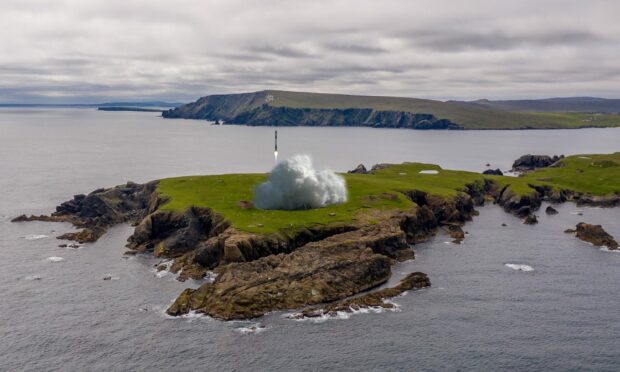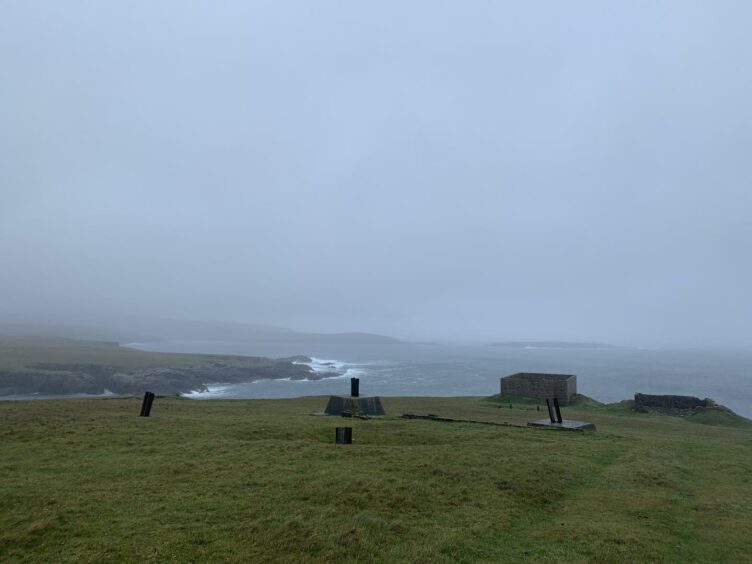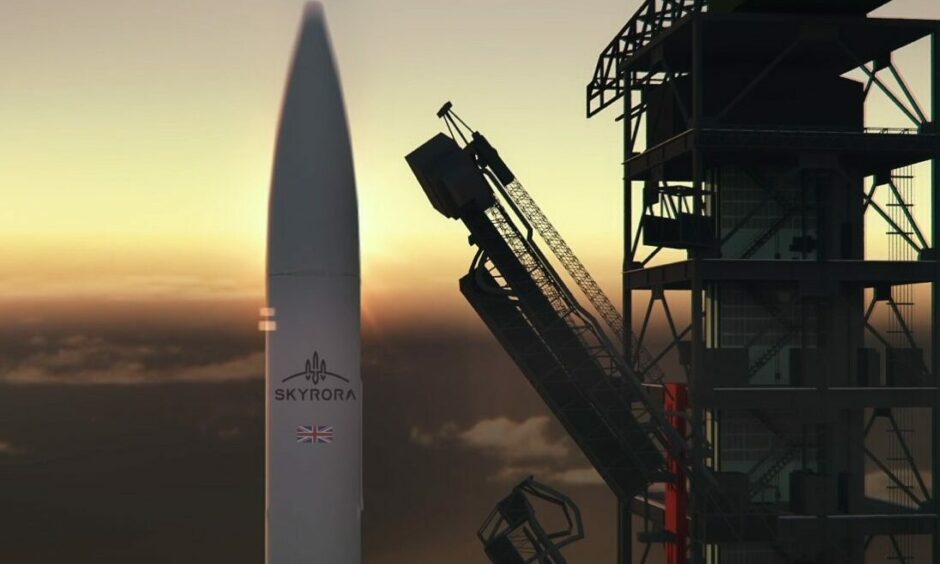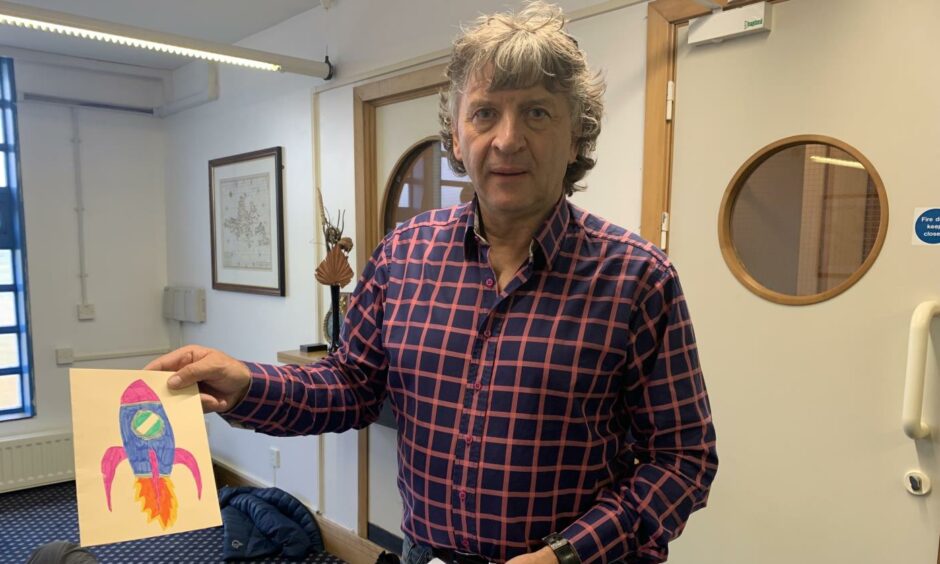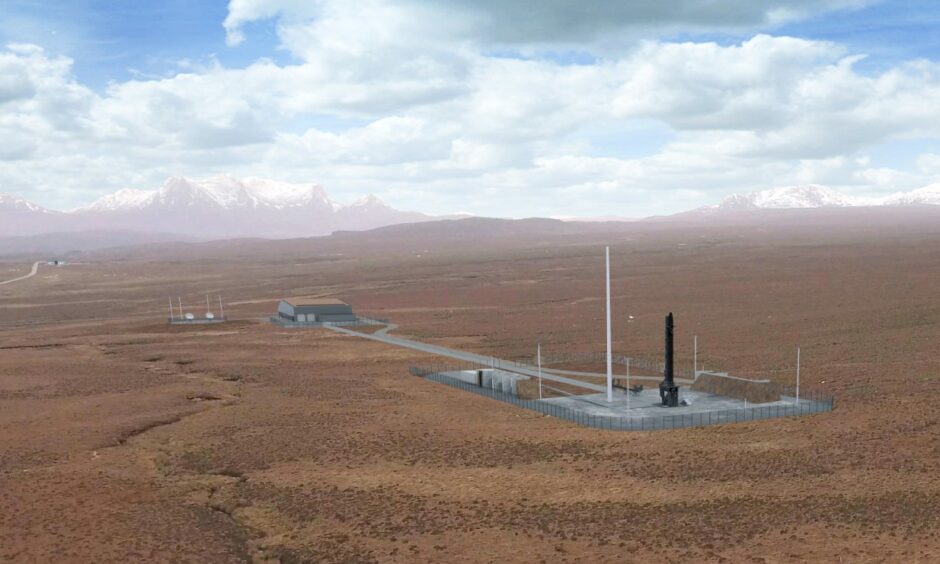Construction of the UK’s first vertical spaceport is set to begin next month (March) after it received planning approval from Shetland Islands Council (SIC).
The local authority’s approval was hailed as the “critical first step” in building the UK’s first commercial spaceport and establishing the UK as the European hub for commercial spaceflight.
The approval came after Historic Environment Scotland (HES) withdrew its objections to the spaceport in January following months of discussions and the submission of a revised proposal.
WWII radar station
Previously the agency looking after Scotland’s historic environment refused what is called a ‘Scheduled Monument Consent’ because of the impact the project would have on the nationally important WWII Skaw radar station at Lamba Ness.
The approval provides Scottish Ministers with a 28-day window to review the £43 million plan by SaxaVord UK Spaceport.
Should Scottish Ministers choose not to call the application in for review, or call it in and agree that the project should proceed, construction of the facility can begin.
The privately-funded spaceport will consist of three launchpads at the Lamba Ness peninsula in Unst, allowing for the launch of small satellites into either polar or sun-synchronous, low-earth orbits.
With the ambition of achieving 30 launch events per year, the site will support a range of launch service providers (LSPs) supporting industries and services including telecommunications, media, weather and defence.
Timelines are tight with the target of delivering the first orbital launch from UK soil after the third quarter of this year.
Up, up and away
In October, Skyrora, a company headquartered in Edinburgh, announced a deal to launch several rockets over the next decade from the SaxaVord Spaceport, with first planned for this year.
The Scottish company is vying with ABL Space, an American rocket firm which also hopes to launch from SaxaVord in 2022.
ABL is working as the partner of a £40million UK Space Agency “pathfinder” project, which is being led by US aerospace and defence giant, Lockheed Martin.
Lockheed Martin expects the launch site may eventually create about 140 jobs on Unst and inject at least £4.9 million per annum into the local economy.
In a statement, SaxaVord Spaceport chief executive Frank Strang said: “We have been working on bringing the space economy to Shetland for five years, so it is fantastic that the economic benefits are already being felt.
“To date, we have teamed up with established Shetland companies, such as Sandisons and Ocean Kinetics, as well as emerging local organisations, created by Unst residents who wish to support our exciting project.
“We will spend upwards of £43m over the next 18 months, rising to £100m in the next five years.
“We have already started blasting and crushing stone and are seeking to clarify the conditions imposed on the development by HES, SIC and others as soon as possible.
“Our team will collectively do everything in its power to ensure we can deliver this historic mission for Shetland, Scotland, and the UK.”
Nik Smith, UK and Europe regional director for Lockheed Martin, said: “The launch of the UK’s first vertical rocket is a major step forward in the development of commercial UK space opportunities, so we’re proud to be supporting the UK Space Agency to achieve their goal of creating a world-leading commercial launch market through regular, reliable and responsible access to space.”
Humbling support
Mr Strang added that the SaxaVord Spaceport team had received support from the people of Unst without which the project would have struggled to maintain momentum.
“In many ways, it has been humbling for us all,” he said.
“I would like to thank everyone involved for their patience and belief in what we are delivering.
“Lastly, space is a global business, and we at SaxaVord are working with clients from all over the world to achieve this.”
Jamie Halcro Johnston, the Scottish Conservative shadow business minister also praised the effort behind the development of the spaceport.
He said: “This is an important development for the UK’s space industry and promises to be transformative for Unst itself, reversing years of population decline.”
Shetland’s Ukranian links
He pointed out that Skyrora operates a research and development (R&D) facility in Dnipro, Ukraine.
Engineers from the firm joined the under secretary of state for Scotland Iain Stewart on a recent visit to the spaceport site.
“Although Scottish domiciled, their roots are very much in Ukraine,” Mr Strang said.
“I would like to express our very best wishes and support to all their staff and families who are now caught up in the dreadful events in Ukraine following the senseless Russian invasion of their homeland.”
Space race in Scotland
Plans are under way to build launch sites for rockets at three locations in the Highlands and Islands.
In addition to the Shetland project, Highlands and Islands Enterprise has plans to develop SpaceHub Sutherland on crofting land on the A’ Mhoine peninsula, while local authority Comhairle nan Eilean Siar (Western Isles Council) is working with Ministry of Defence contractor QinetiQ and others to get lift off at Spaceport 1 at Scolpaig on North Uist.
Other Scottish sites in Scotland developing plans for spaceports include Machrihanish, near Campbeltown, and Prestwick Airport.
All five projects are part of efforts for Scotland to capture a £4 billion share of the global space market.
